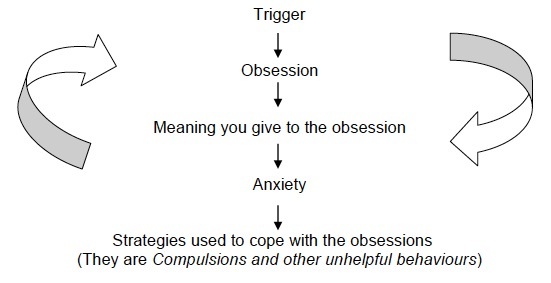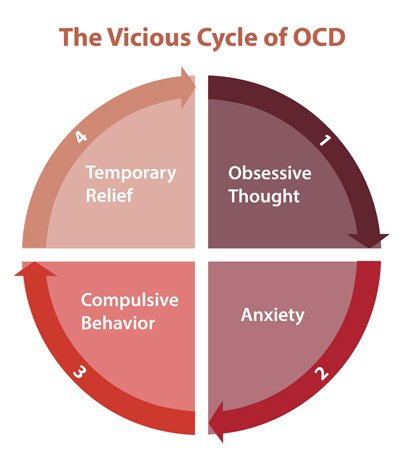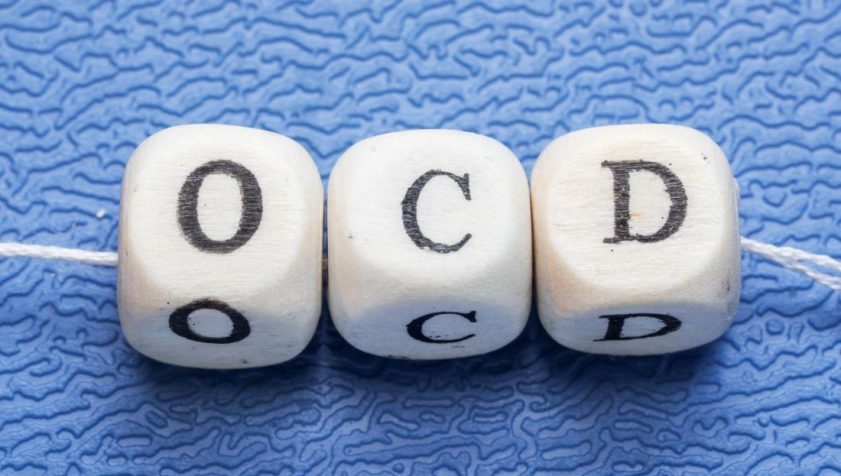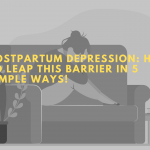Obsessive-Compulsive Disorder is an anxiety disorder that can be controlled but not completely cured. A person suffering from OCD is never able to realize that he/she is going through some problem until and unless told by someone else. Since this disorder keeps repeating itself at regular intervals, therefore, along with the medications the patients are also supposed to take extra care of themselves. So, here are the 6 most effective self-help tips for OCD patients and they are as follows:

Tip 1: Identify Your Triggers
The first step to managing your OCD symptoms is to acknowledge the triggers—the thoughts or situations—that cause your obsessions and compulsions. Record an inventory of the triggers you experience every day and therefore the obsessions they provoke. Rate the intensity of the fear or anxiety you experienced in each situation then the compulsions or mental strategies you wont to ease your anxiety. for instance, if you’ve got a fear of being contaminated by germs, touching a railing at the mall might generate a fear intensity of three, whereas touching the restroom floor within the mall might generate a ten and need quarter-hour of handwashing to ease your anxiety.
Keeping track of your triggers can assist you to anticipate your urges. And by anticipating your compulsive urges before they arise, you’ll help to ease them. for instance, if your compulsive behavior involves checking that doors are locked, windows closed, or appliances turned off, attempt to lock the door or close up the appliance with extra attention the primary time.
Create a solid picture then make attention. Tell yourself, “The window is now closed,” or “I can see that the oven is turned off.”
When the urge to see arises later, you’ll find it easier to re-label it as “just a fanatical thought.”
Identifying and recording your triggers also provides a crucial tool for learning to resist your OCD compulsions.
Tip 2: Learn To resist OCD Compulsions
It might seem smart to avoid the situations that trigger your obsessive thoughts, but the more you avoid them, the scarier they feel. Conversely, by repeatedly exposing yourself to your OCD triggers, you’ll learn to resist the urge to finish your compulsive rituals. this is often referred to as exposure and response prevention (ERP) and maybe a mainstay of professional therapy for OCD.
ERP requires you to repeatedly expose yourself to the source of your obsession—and then refrain from the compulsive behavior you’d usually perform to scale back your anxiety. If you’re a compulsive hand-washer, for instance, that would mean touching the door handle during a public restroom then not allowing yourself to scrub your hands. As you sit with the anxiety, the urge to scrub your hands will gradually begin to travel away on its own. during this way, you’ll learn that you simply don’t need the ritual to urge obviate your anxiety which you’ve got some control over your obsessive thoughts and compulsive behaviors.
Tackling your biggest fears immediately could be too extreme, so ERP exercises start with you confronting lesser fears then working your high the “fear ladder.” Confront those situations that generate a coffee fear intensity and once you’re ready to tolerate the anxiety you’ll advance to subsequent, harder exposure challenge.
Building your fear ladder: believe your end goal (to be ready to use a public restroom without worrying about contamination, for instance, or to drive to figure no end to see if you’ve hit something) then break down the steps needed to succeed in that goal. Using the knowledge you recorded in identifying your triggers, make an inventory of situations from the smallest amount scary to the foremost scary. the primary step should cause you to slightly anxious, but not so frightened that you’re too intimidated to undertake it.
Start with the primary step and don’t advance until you begin to feel easier doing it. If possible, stay within the situation long enough for your anxiety to decrease. The longer you expose yourself to your OCD trigger, the more you’ll get won’t to it and therefore the less anxious you’ll feel once you face it subsequent time. Once you’ve done a tread on several separate occasions without feeling an excessive amount of anxiety, you’ll advance to the subsequent step. If a step is just too hard, break it down into smaller steps or go slower.
As you’re resisting your compulsions, specialize in the emotions of hysteria. rather than trying to distract yourself, allow yourself to feel anxious as you resist the urge to interact in your compulsive behavior. you’ll believe that the discomfort you’re feeling will continue until you engage within the compulsion. But if you persist with it, the anxiety will fade. And you’ll realize that you’re not getting to “lose control” or have some quite breakdown if you don’t perform the ritual.
Practice: The more often you practice, the quicker your progress is going to be. But don’t rush. Go at a pace that you simply can manage without feeling overwhelmed. And remember: you’ll feel uncomfortable and anxious as you face your fears, but the emotions are only temporary. whenever you expose yourself to your trigger, your anxiety should lessen and you’ll start to understand that you simply have more control (and less to fear) than you thought.

Tip 3: Challenge Obsessive Thoughts
Everyone has troubling thoughts or worries from time to time. But obsessive-compulsive disorder causes the brain to urge stuck on a specific anxiety-provoking thought, causing it to play over and over in your head. The more unpleasant or distressing the thought, the more likely you’re to undertake to repress it. But repressing thoughts is nearly impossible and trying usually has the other effect, causing the unpleasant thought to resurface more frequently and become more bothersome.
As with resisting compulsions, you’ll overcome disturbing, obsessive thoughts by learning to tolerate them through exposure and response prevention exercises. It’s also important to remind yourself that simply because you’ve got an unpleasant thought, that doesn’t cause you to a nasty person. Your thoughts are just thoughts. Even unwanted, intrusive, or violent thoughts are normal—it’s only the importance you attach to them that turns them into damaging obsessions.
The following strategies can assist you to see your thoughts for what they’re and regain a way of control over your anxious mind.
- Write down your obsessive thoughts. Keep a pad and pencil on you, or type on a smartphone. once you begin to obsess, write down all of your thoughts or compulsions.
- Keep writing because the OCD urges continue, getting to record exactly what you’re thinking, albeit you’re repeating an equivalent phrase or an equivalent urges over and over.
- Writing it all down will assist you to see just how repetitive your obsessions are.
- Writing down an equivalent phrase or urge many times will help it lose its power.
- Writing thoughts down is far harder work than simply thinking them, so your obsessive thoughts are likely to disappear sooner.
Create an OCD worry period. instead of trying to suppress obsessions or compulsions, develop the habit of rescheduling them.
Choose one or two 10-minute “worry periods” every day, the time you’ll devote to obsessing.
During your worry period, focus only on negative thoughts or urges. Don’t attempt to correct them. At the top of the fear period, take a couple of calming breaths, let the obsessive thoughts go, and return to your normal activities. the remainder of the day, however, is to be designated freed from obsessions.
When thoughts inherit your head during the day, write them down and “postpone” them to your worry period.
Challenge your obsessive thoughts. Use your worry period to challenge negative or intrusive thoughts by asking yourself:
What’s the evidence that the thought is true? That it’s not true? Have I confused an idea with a fact?
Is there a more positive, realistic way of watching the situation?
What’s the probability that what I’m frightened of will actually happen? If the probability is low, what are some more likely outcomes?
Is the thought helpful? How will obsessing about it help me and the way will it hurt me?
What would I tell a lover who had this thought?
Create a tape of your OCD obsessions or intrusive thoughts. specialize in one specific thought or obsession and record it to a tape machine or smartphone.
Recount the obsessive phrase, sentence, or story exactly because it comes into your mind.
Play the tape back to yourself, over and over for a 45-minute period every day, until taking note of the obsession not causes you to feel highly distressed.
By continuously confronting your worry or obsession you’ll gradually be subsided anxiously. you’ll then repeat the exercise for a special obsession.

Tip 4: Reach out for support
OCD can worsen once you feel powerless and alone, so it’s important to create a robust network. The more connected you’re to people, the less vulnerable you’ll feel. And just lecture an understanding person about your worries and urges can make them seem less threatening.
Stay connected to family and friends. Obsessions and compulsions can consume your life for the purpose of social isolation. In turn, social isolation will aggravate your OCD symptoms. It’s important to take a position concerning family and friends. Talking face-to-face about your worries and urges can make them feel less real and less threatening.
Join an OCD support group. You’re not alone in your struggle with OCD, and participating during a support group is often an efficient reminder of that. OCD support groups enable you to share your own experiences and learn from others who face an equivalent problem.
Tip 5: Manage Stress
While stress doesn’t cause OCD, it can trigger symptoms or make them worse. workout and connecting with another person face-to-face are two very effective ways to calm your systema nervosum. you’ll also:
Quickly self-soothe and relieve anxiety symptoms by making use of 1 or more of your physical senses—sight, smell, hearing, touch, taste—or movement. you would possibly try taking note of a favorite piece of music, watching a treasured photo, savoring a cup of tea, or stroking a pet.
Practice relaxation techniques. Mindful meditation, yoga, deep breathing, and other relaxation techniques can help lower your overall stress and tension levels and assist you to manage your urges. For best results, try practicing a relaxation technique regularly.

Tip 6: Make Lifestyle Changes To Ease OCD
Men talking at the gym
A healthy, balanced lifestyle plays an enormous role in easing anxiety and keeping OCD compulsions, fears, and worry cornered.
Exercise regularly. Exercise may be a natural and effective anti-anxiety treatment that helps to regulate OCD symptoms by refocusing your mind when obsessive thoughts and compulsions arise. for the max benefit, attempt to get half-hour or more of aerobic activity on most days. Ten minutes several times each day are often as effective together a longer period especially if you pay mindful attention to the movement process.
Get enough sleep. Not only can anxiety and worry cause insomnia, but a scarcity of sleep also can exacerbate anxious thoughts and feelings. When you’re well-rested, it’s much easier to stay your emotional balance, a key think about dealing with anxiety disorders like OCD.
Avoid alcohol and nicotine. Alcohol temporarily reduces anxiety and worry, but it actually causes anxiety symptoms because it wears off. Similarly, while it’s going to seem that cigarettes are calming, nicotine is really a strong stimulant. Smoking results in higher, not lower, levels of hysteria and OCD symptoms.
Conclusion
So, this is it!! These 6 self-help tips for OCD will certainly help you recover from this disorder easily and won’t let it repeat again and again!! Self-help is the most important aid for the people suffering from Obsessive Compulsive Disorder, therefore, I would recommend that if you have any disorder like this then you must follow these steps to stay fit mentally.








